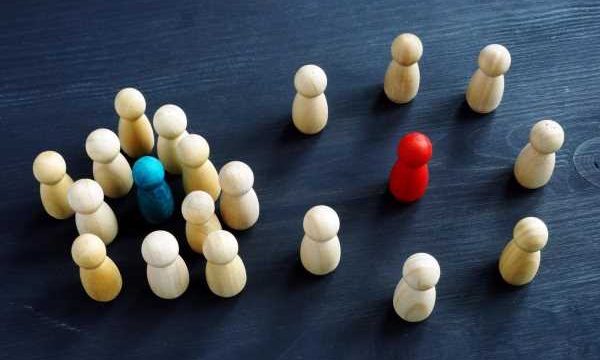In a recent study posted to the medRxiv* preprint server, researchers investigated the association between introversion and risk of mortality during the coronavirus disease 2019 (COVID-19) pandemic.

Studies have shown that extrovert populations have lower mortality rates as compared to introverted individuals under normal situations. However, within the setting of the COVID-19 pandemic wherein social contact needs to be kept to a minimum, introverts might have an advantage.
About the study
In the present study, researchers predicted that introverts were more likely to limit social interactions and activities in the light of the pandemic as compared to extroverts.
The team obtained data from a study called Midlife in the United States (MIDUS) that collected information related to non-institutionalized adults aged between 25 and 74 years residing in the US. The study cohort comprised an oversampling of older individuals, men, a pair of twins, and a sample of siblings. The team confirmed the vital status of the participants by searching through the National Death Index, longitudinal sample maintenance, and survey fieldwork.
The personalities of the participants were estimated at wave 1 using questionnaires related to the Big Five taxonomy of personality. The evaluation of each personality was based on the extent to which the participant responded to a set of four to seven descriptions, using responses that were categorized into: (1) not at all, (2) a little, (3) some, and (4) a lot.
The team predicted extroversion as the mean of the five descriptors including outgoing, lively, friendly, talkative, and active. Furthermore, conscientiousness was evaluated with descriptors including organized, hardworking, responsible, and careless. Neuroticism was evaluated using four descriptors such as moody, nervous, worrying, and calm. Moreover, agreeableness was evaluated with five items described as helpful, caring, warm, sympathetic, and soft-hearted. Openness was described using items such as creative, intelligent, imaginative, curious, sophisticated, broad-minded, and adventurous.
The researchers also obtained self-assessed health status from the participants, which was based on a five-point ordinal scale. Physical limitations of the individuals were also assessed based on the self-assessed performance of eight tasks: (1) lifting or carrying groceries; (2) bending and kneeling, (3) walking for over a mile, (4) walking several blocks, (5) walking a block, (6) vigorous activities such as running or lifting heavy objects, (7) climbing several flights, and (8) moderate activities such as bowling or vacuuming.
Results
The study results showed that the mean extroversion score was 3.2 while 40% of the participants scored 2.4 or less, 23% scored more than 3.6, and 12% scored the highest value of four. The mean extroversion score was the highest for agreeableness with 3.5, and conscientiousness with 3.4 while neuroticism scored the lowest value of 2.2.
Before the pandemic, extroversion was correlated with lower mortality; however, during the pandemic, extroverted individuals showed higher pandemic-related excess mortality than introverted persons. After adjusting for the personality trait of conscientiousness, the variation in the impact of extroversion before and during the COVID-19 pandemic was slightly significant. When the team also adjusted for the traits of neuroticism, agreeableness, and openness, the effect of extroversion on the mortality rates before the pandemic was more substantial while that during the pandemic was slightly weaker. Overall, the correlation between extroversion and pandemic-related excess mortality remained stable after adjusting for personality traits.
In comparison to participants who scored a mean level of extroversion, mortality rates before the pandemic were 10% lesser and 12% higher for participants who were extremely extroverted and extremely introverted persons, respectively. However, the team observed that the extroverts had higher mortality rates than the introverts throughout the pandemic.
The survival ratio of individuals aged between 25 and 85 years reduced from 57% before to 48% during the pandemic for extroverts. On the other hand, the survival ratio increased from 49% before to 64% during the pandemic for introverts. Thus, the survival of extroverted persons during the pandemic was similar to that of the introverts before the pandemic while the survival rates of introverts during the pandemic were higher than that of the extroverts pre-pandemic.
Overall, the study findings showed that the mortality advantage displayed by the extroverts under normal situations was non-existent at the beginning of the COVID-19 pandemic. Moreover, introverts showed a substantial mortality advantage over extroverts during the pandemic.
*Important notice
medRxiv publishes preliminary scientific reports that are not peer-reviewed and, therefore, should not be regarded as conclusive, guide clinical practice/health-related behavior, or treated as established information.
- Dana A Glei, Maxine Weinstein. (2022). In the Midst of a Pandemic, Introverts May Have a Mortality Advantage. medRxiv. doi: https://doi.org/10.1101/2022.05.24.22275508 https://www.medrxiv.org/content/10.1101/2022.05.24.22275508v1
Posted in: Medical Science News | Medical Research News | Disease/Infection News
Tags: Coronavirus, Coronavirus Disease COVID-19, covid-19, Mortality, Pandemic, Running, Twins, Walking

Written by
Bhavana Kunkalikar
Bhavana Kunkalikar is a medical writer based in Goa, India. Her academic background is in Pharmaceutical sciences and she holds a Bachelor's degree in Pharmacy. Her educational background allowed her to foster an interest in anatomical and physiological sciences. Her college project work based on ‘The manifestations and causes of sickle cell anemia’ formed the stepping stone to a life-long fascination with human pathophysiology.
Source: Read Full Article
